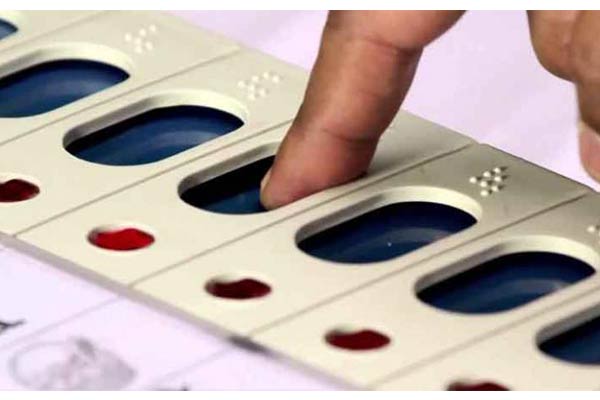
Free and fair elections are the foundation of Indian democracy which are now being conducted using the modern technology with the help of Electronic voting machine (EVM). Ever since its inception, doubts have been raised over the functioning of EVMs. Not only in India, similar electronic voting machines used around the world have been facing serious security problems.
Even in the US Presidential elections, the voting was apparently tinkered. There were allegations of hacking by foreign powers like Russia which had affect the final outcome of the presidential election. Not only democrats but also republicans accused of tampering.
The charge is that EVM can be meddled or programmed to vote for a particular party or a candidate. Post the assembly elections 2017, leaders accused that either the EVMs did not accept votes other than BJP, or the votes of other parties have gone to BJP in the EVMs. Few knocked the doors of Supreme Court on this issue.
Several leaders, public organisations said that they do not trust the EVMs. People have been challenging Election Commission of India (EC) to allow them to play with EVM to show how it can be tampered. EC took a strong stand and dismissed the allegations saying that the systems were tamperproof. Though it claims that the EVMs are thoroughly tested, it is not able to instil the confidence in the people.
In the year 1982, India started experimenting with EVM in fifty polling stations in Kerala, Parur assembly bye-elections. Due to several complications, the idea was shelved until 1999. In 1999 elections, in few constituencies EVMs were used. It was only in 2004 Assembly and Parliamentary elections, EVMs were used for polling in the entire country. The advantage with EVMs is that polling and counting can be done swiftly. Moreover, paper can be saved. But ever since its inception, these EVMs have been facing accusations and several people reached out to courts.
In 2009 Subramanian Swamy attributed the loss of BJP to the functioning of EVMs and went to court. Even BJP senior leader L K Advani at that time claimed that UPA has tampered the EVMs. In the same year, BJD won in the assembly elections in Odisha, when the Congress Leader J B Patnaik attributed it to rigging the EVMs and knocked the court doors. In the 2014 elections, Assom Chief Minister Tarun Gogoi attributed BJPs win to tampering of EVMs. In the same year, social activist Medha Patakar complained to EIC about fiddling of EVMs. In 2017, Mayawati, Arvind Kejriwal, Harish Rawat alleged that EVMs were meddled in Uttar Pradesh, Punjab and Uttarakhand respectively. West Bengal chief minister Mamata Banerjee also alleged the tampering of EVMs.
This fight has reached Supreme Court which ordered election commission to submit a report after testing the EVMs on par with international standards. In 2013, Supreme Court directed EC to introduce the Voter-Verified Paper Audit Trail (VVPAT) system in a phased manner so that full implementation can be achieved by 2019.
A recent controversial demonstration of the EVM in Madhya Pradesh’s Bhind district lent weight to the opposition parties accusations that voting machines could be tampered. The VVPAT was only dispensing slips of BJP symbol during the demonstration.
A few experts claim that, even though the EVM prints the slip with the voter’s choice, the programming would be already done internally. After UP elections, there was a five-hour debate in Rajya Sabha on electoral reforms, where more than half the time was allocated to EVM. As of today, the upper house witnessed noisy scenes as opposition created ruckus over EVM rigging. A war of words is being seen between EC CEO Nasim Zaidi and AAP chief Arvind Kejriwal.
This issue is not limited to India alone but it is the same story in technologically advanced countries as well. Most of the countries are opting for ballot paper voting. Australia has two kinds of voting arrangements that suit the needs of its people, its parties and its parliamentarians. France which is going for its presidential elections in April and May, announced that Internet voting would not be permitted in the 2017 elections due to cybersecurity concerns for its citizens abroad. In 2009 Germany took a decision to stop using EVMs after 9years of its usage. On similar lines Netherlands, Ireland and Italy refrained from using voting machines. Based on public opinion, Kazakhstan which was using voting machines since 2003 decided to stop using voting machines in 2011. England uses machines in local body elections but not for the general elections across the country. Switzerland is debating on introducing voting machines. Spain and Norway are in a dilemma over scrapping the voting machine. Russia is hoping to embrace EVM for its presidential elections in 2018.
A lot of countries are preferring to take public opinion over the usage of EVM. But Indian government and EC are unequivocally saying that the EVM machines are “fully tamper proof” and all the allegations are “baseless and speculative”. The EC has decided to replace over nine lakh EVMs with advanced M3 machines before the 2019 Lok Sabha elections. The new EVMs which will be introduced in 2018 December will have unique feature to become inoperable at the first attempt of tampering. Minister of State for Law and Justice P P Chaudhary mentioned in the Lok Sabha that the EC has decided to replace 9,30,430 EVMs purchased before 2006 in a phased manner before the General Election and simultaneous assembly polls in 2019.
















